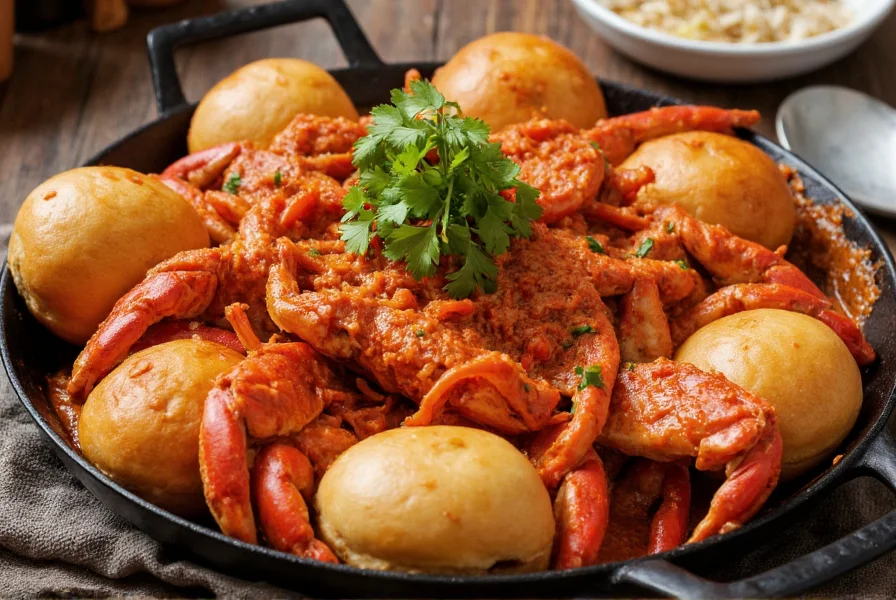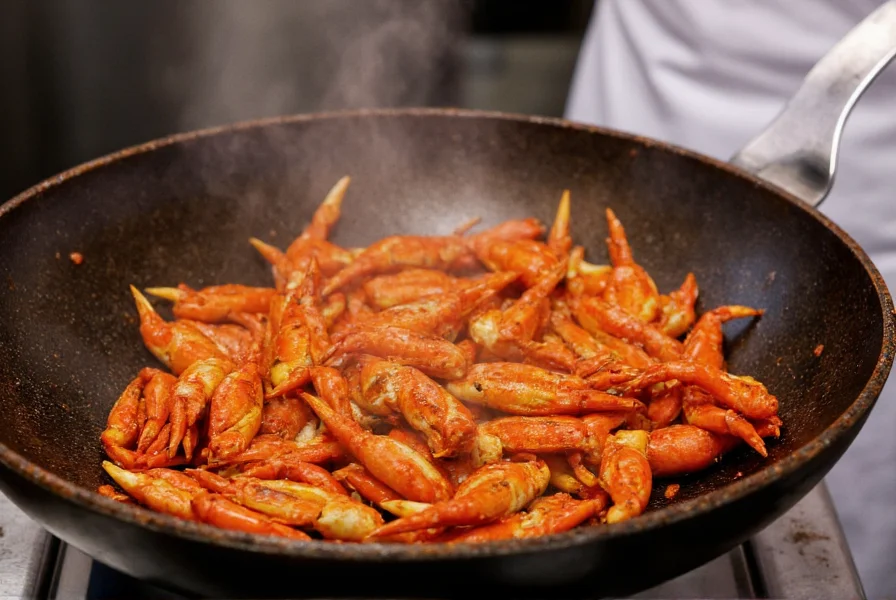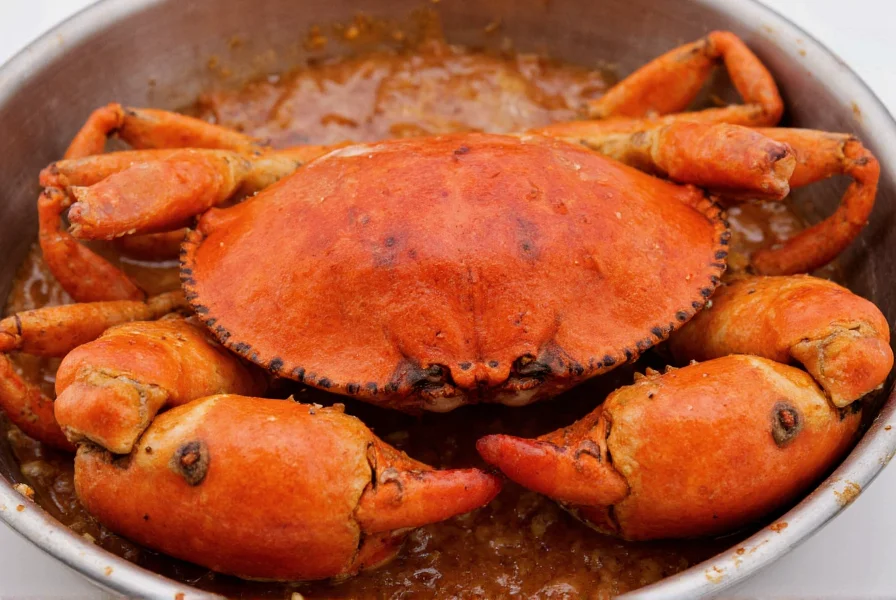
When you ask what is chili crab, you're exploring one of Southeast Asia's most celebrated culinary creations. This iconic Singaporean dish has captivated food enthusiasts worldwide with its distinctive balance of sweet, tangy, and mildly spicy flavors. Unlike fiery hot dishes, authentic chili crab features a rich, glossy sauce that coats fresh mud crabs without overwhelming their delicate sweetness.
The Origins of Singapore's National Dish
Chili crab emerged in the 1950s along Singapore's coastal areas, with multiple claimants to its invention. Some credit Palm Beach Seafood Restaurant's founder, Augustine Kang, while others point to Cher Yam Tian of Paradise Restaurant. Historical evidence suggests street hawker Cher Yam Tian first prepared the dish in 1956 using readily available ingredients: fresh crabs, tomatoes, eggs, and chili.
Understanding the history of Singapore chili crab reveals how resourceful hawkers transformed simple ingredients into a national treasure. During Singapore's post-war period, vendors creatively combined Chinese cooking techniques with local Malay spices and Peranakan flavors, creating what would become the nation's unofficial culinary ambassador.
Key Components of Authentic Chili Crab
| Ingredient Category | Essential Components | Function in Sauce |
|---|---|---|
| Base Ingredients | Fresh mud crabs, tomato puree, chili paste | Provides foundation for sweet-tangy flavor profile |
| Aromatic Elements | Garlic, ginger, shallots | Creates depth and complexity |
| Signature Sauce Elements | Chili, vinegar, sugar, eggs | Forms glossy, slightly thickened sauce with balanced sweet-spicy notes |
| Accompaniments | Mantou (fried bread buns) | Absorbs sauce and enhances dining experience |
What Makes Chili Crab Unique
Many confuse chili crab versus black pepper crab, but they're distinct preparations. While black pepper crab features a dry, peppercorn-heavy coating, chili crab's signature lies in its wet, glossy sauce. The sauce achieves its characteristic texture through a unique preparation method: stir-fried aromatics combine with tomato base, chili, and vinegar, then thickened with beaten eggs that create delicate ribbons throughout the sauce.
When examining what chili crab is made of, note that authentic versions avoid ketchup (a common Western misconception) and use fresh ingredients. The chili level remains moderate—typically between 2,000-5,000 Scoville units—allowing the crab's natural sweetness to shine through. This careful balance represents Singapore's culinary philosophy: harmony of flavors rather than overwhelming heat.
Cultural Significance and Dining Experience
Chili crab transcends mere sustenance in Singapore—it's a cultural experience. Families and friends gather around steaming platters, cracking shells with mallets and picking out tender meat. The accompanying mantou buns serve dual purposes: they soak up the flavorful sauce and provide a textural contrast to the tender crab.
Learning how to eat chili crab properly enhances appreciation for this dish. Traditional preparation involves serving whole crabs with claws already cracked for accessibility. Diners use specialized crab crackers for shells, then dip the sweet meat into the sauce or use torn pieces of mantou to scoop up every last bit of the flavorful gravy.
Regional Variations and Authenticity
While Singapore claims chili crab as its national dish, Malaysia also features similar preparations with subtle differences. Singaporean versions typically use a tomato-based sauce with moderate sweetness, while some Malaysian interpretations incorporate more tamarind for tanginess. The authentic Singapore chili crab ingredients remain consistent: fresh mud crabs, quality chili, and careful balancing of sweet, sour, and umami elements.
When seeking where to eat chili crab in Singapore, note that authenticity comes from technique rather than specific establishments. Hawker centers often serve equally authentic versions as high-end restaurants, with the key factors being fresh crabs and proper sauce preparation. The dish's popularity has led to international variations, but true chili crab maintains its distinctive sweet-chili-tomato profile without excessive heat.
Preserving Tradition in Modern Times
As Singapore's culinary scene evolves, chili crab remains a steadfast symbol of national identity. Chefs experiment with sustainable crab sources while maintaining traditional preparation methods. Some modern interpretations include chili crab mantou buns transformed into sliders or chili crab pasta, though purists maintain the classic preparation best showcases this culinary treasure.
Understanding the cultural significance of chili crab reveals why Singaporeans fiercely protect its authenticity. The dish represents the nation's multicultural heritage—Chinese cooking techniques, Malay spices, and Peranakan flavor balancing—all coming together in a single, unifying culinary experience that continues to define Singaporean identity on the global stage.

What is the difference between chili crab and black pepper crab?
Chili crab features a sweet, tangy tomato-chili sauce with moderate heat, while black pepper crab uses a dry coating of cracked black peppercorns, garlic, and butter. The sauces represent two distinct Singaporean seafood preparations—chili crab is wet and glossy with balanced sweet-spicy notes, whereas black pepper crab is dry, intensely peppery, and focuses on the crab's natural flavor enhanced by pepper.
Is chili crab actually spicy hot?
Authentic Singapore chili crab is not extremely spicy. The sauce balances sweet, tangy, and mildly spicy elements, typically ranging from 2,000-5,000 Scoville units—comparable to a mild jalapeño. The heat serves to enhance rather than overwhelm the dish, allowing the crab's natural sweetness to shine through. Many Western adaptations mistakenly make it much hotter than traditional versions.
What type of crab is used in authentic chili crab?
Authentic Singapore chili crab uses mud crabs (Scylla serrata), known locally as "kelong crabs." These crabs have sweet, tender meat with a slightly briny flavor that perfectly complements the sauce. Female crabs with roe are particularly prized. While other crab varieties might be used outside Singapore due to availability, mud crabs remain essential for the traditional texture and flavor profile.
Why is mantou served with chili crab?
Mantou (Chinese steamed buns) are served with chili crab primarily for sauce absorption. The soft, slightly sweet fried bread perfectly soaks up the flavorful chili-tomato gravy, allowing diners to enjoy every bit of sauce. This practice transformed from practicality—using bread to capture sauce that would otherwise go to waste—into an essential part of the chili crab experience that enhances textural contrast and completes the meal.
How did chili crab become Singapore's national dish?
Chili crab became Singapore's national dish through its embodiment of the nation's multicultural identity. Created by Chinese immigrants using local ingredients and cooking techniques that incorporated Malay spices, it represents Singapore's fusion heritage. Its popularity grew from hawker stalls to international recognition, with even political figures like Lee Kuan Yew promoting it globally. In 1991, the Singapore Tourism Board officially recognized it as a national dish due to its widespread appeal and cultural significance.











 浙公网安备
33010002000092号
浙公网安备
33010002000092号 浙B2-20120091-4
浙B2-20120091-4